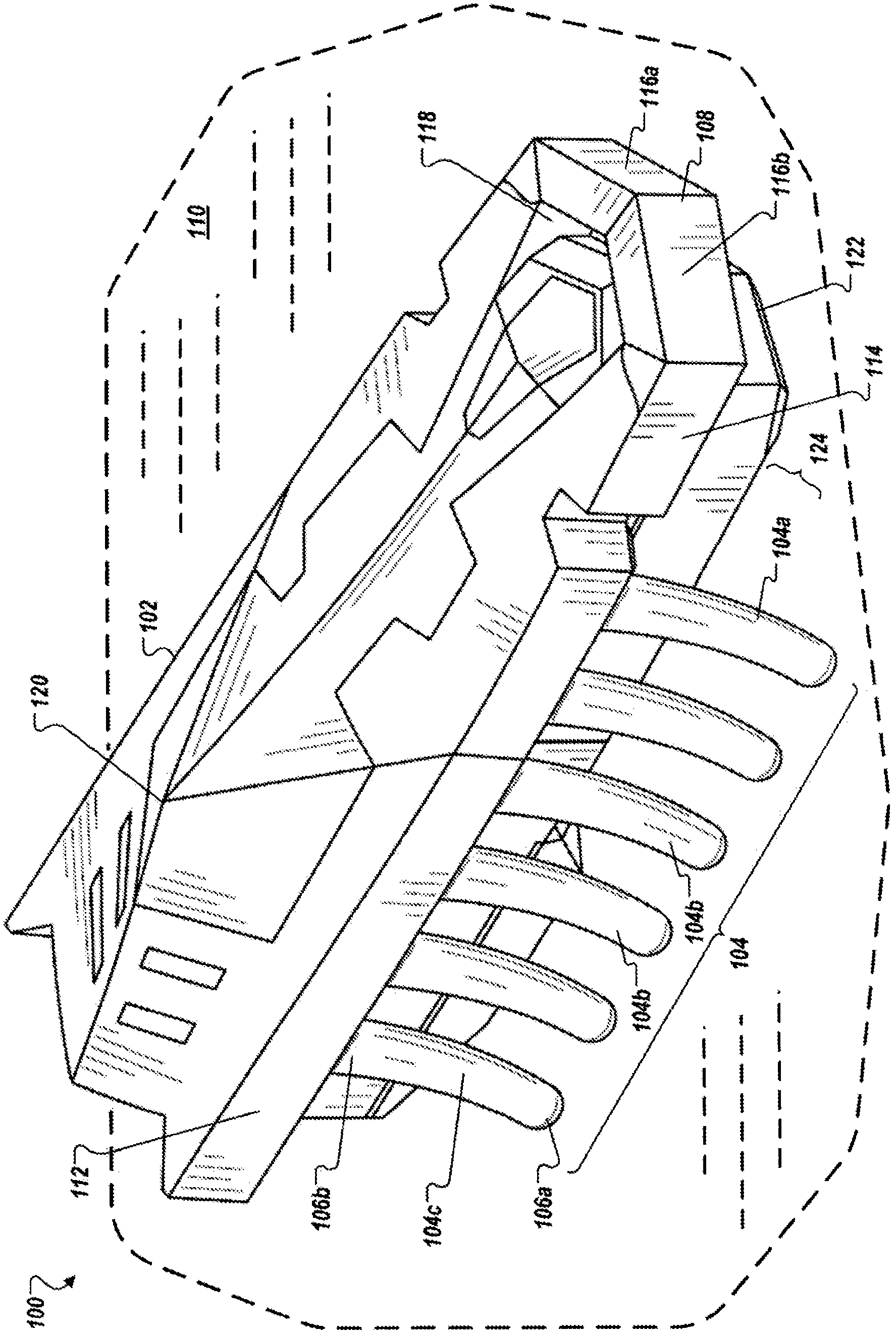Display case for vibration powered device
A vibration-driven, motion-based technology that is applied to tracks for toys, automatic toys, toys, etc., and can solve problems such as low fidelity
- Summary
- Abstract
- Description
- Claims
- Application Information
AI Technical Summary
Problems solved by technology
Method used
Image
Examples
Embodiment Construction
[0052] Small robotic devices or vibration-driven vehicles can be designed to move over surfaces such as floors, tabletops, or other relatively flat surfaces. Robotic devices are adapted to move autonomously and, in some applications, appear to turn in random directions. Typically, a robotic device includes a housing, a plurality of legs, and a vibration mechanism (e.g., a motor or spring-loaded mechanism to rotate an eccentric load, a motor or other mechanism adapted to induce oscillations of a counterweight, or other component settings where the centroid changes rapidly). Thus, small robotic devices can mimic organic life, such as beetles or insects, when they move.
[0053] The motion of the robotic device may be induced by the motion of a rotating electric motor within or mounted to the device in combination with a rotating counterweight arranged with a center of mass offset relative to the rotational axis of the motor. The rotational movement of the counterweight vibrate...
PUM
 Login to View More
Login to View More Abstract
Description
Claims
Application Information
 Login to View More
Login to View More - R&D
- Intellectual Property
- Life Sciences
- Materials
- Tech Scout
- Unparalleled Data Quality
- Higher Quality Content
- 60% Fewer Hallucinations
Browse by: Latest US Patents, China's latest patents, Technical Efficacy Thesaurus, Application Domain, Technology Topic, Popular Technical Reports.
© 2025 PatSnap. All rights reserved.Legal|Privacy policy|Modern Slavery Act Transparency Statement|Sitemap|About US| Contact US: help@patsnap.com



